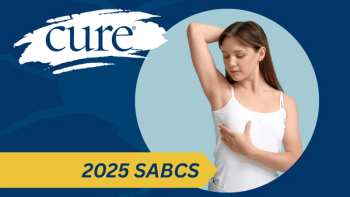
Stereotypical Portrayals of Cancer
Even my favorite show depicted cancer in a stereotypical way, which impacted my view on cancer when I first received my diagnosis of follicular lymphoma.
Every issue that exists is portrayed, at some point, in some form of media. Sometimes it will cause an emotional reaction — that’s what trigger warnings are for. But it’s really not possible to predict every event that might trigger a response.
One of my favorite TV shows is “Bones,” which centers around a forensic anthropologist and an FBI agent who solve murders in a joint project between the FBI and the Jeffersonian Institute, a fictional historical research facility in the DC area. The main character, Temperance Brennan, has a variety of interns, one of whom, Wendell Bray, is an everyman sort.
Wendell Bray is a wonderful character. He’s intelligent but doesn’t demonstrate it in ways that annoy those around him. He’s polite and deferential, but not subservient. He is the boy next door, and everyone roots for him. The support only intensifies when he is diagnosed with Ewing sarcoma, a rare form of bone cancer with a 10% survival rate. The storyline is compassionate, and everyone at the Jeffersonian is supportive of his treatment and recovery.
At the same time, however, this storyline includes stereotypes about cancer patients. Wendell is whisked into treatment — appropriate for a cancer as rare and virulent as the one he is diagnosed with — and is unable to work for the duration. He loses his hair. The first-line treatment is ineffective, and Wendell enrolls in a trial, which provides an experimental medication. It works for him, but not for another patient in his cohort. Wendell experiences nausea, which he treats with medical marijuana, which, until a solution is found, costs him his job at the Jeffersonian, because the rules of employment say no illegal drugs, and make no exceptions for prescriptions of such drugs.
Along the way, some stereotypical reactions occur. Another character gives Wendell a pep talk, in which he’s directed to seek treatment not just for himself and the life he has left to live, but because he owes it to the people around him. Wendell decides, given his prognosis, to tour the world instead of getting treatment, but then reverses his decision based on how he wants to be remembered by those around him, as someone who fought instead of someone who ran away. The underlying idea is that cancer must be fought, as long and as hard as possible, no matter what; anything else is unacceptable. Ultimately, the trial in the show is successful; Wendell survives and then prospers.
But it’s still TV, which exists to garner ratings, not necessarily to portray truth. Wendell’s cancer is diagnosed using an X-ray that was taken after a broken bone, which his supervisor reviewed without his knowledge, much less his permission.
While Wendell’s hair loss is portrayed, side effects such as nausea are only discussed, and none of the other common and/or potential side effects come up at all — no mention of any other side or aftereffects. Wendell returns during his treatment trial, and after that episode, his cancer is never mentioned again; no follow-ups, no aftereffects and no signs it ever happening.
And yet, shows like this impacted my expectations for cancer treatment when I was diagnosed with a totally different form of cancer, one with a totally different treatment modality and a much higher likelihood of a positive outcome. Based on depictions in popular media, I expected cancer treatment to be both considerably more onerous and considerably less effective than it turned out to be. I was much more frightened following diagnosis and entering treatment than I probably needed to be, based on the depiction of cancer treatment in popular media. I realize that reality doesn’t really make for good TV, movies, novels, etc., but at the same time, the way TV sensationalizes cancer and cancer treatment for various media presentations can have a significant impact on cancer patients, in ways that I suspect never even occurred to the creators.
It’s not something I really paid attention to before diagnosis, but now, when I see such depictions, they really jump out at me, and I find myself comparing my experience to that of the character. There are so many little pieces to cancer treatment that are never portrayed, and so many stereotypes about cancer treatment that are repeated as givens: that all patients lose their hair, experience severe nausea and fatigue and face significantly negative outcomes, all things that add that much more to the fear that a cancer diagnosis evokes.
I don’t know what to do about it if anything. Fictional media exist to get ratings; reality is a minor secondary concern. But a more realistic portrayal might also help a lot of people, by reducing the fear a cancer diagnosis provokes; a fear that causes a lot of people to ignore symptoms that might lead to earlier diagnosis, a better-tolerated treatment regimen and an overall better outcome. In the meantime, I’ll be wary of any fictional portrayal of cancer.
For more news on cancer updates, research and education, don’t forget to





